第41章 MONEY OR SIMPLE CIRCULATION(22)
Let us assume that £14million is the amount of gold required for the circulation of commodities and that the State throws 210million notes each called £1into circulation:these 210million would then stand for a total of gold worth £14million.The effect would be the same as if the notes issued by the State were to represent a metal whose value was one-fifteenth that of gold or that each note was intended to represent one-fifteenth of the previous weight of gold.This would have changed nothing but the nomenclature of the standard of prices,which is of course purely conventional,quite irrespective of whether it was brought about directly by a change in the monetary standard or indirectly by an increase in the number of paper notes issued in accordance with a new lower standard.As the name pound sterling would now indicate one-fifteenth of the previous quantity of gold,all commodity-prices would be fifteen times higher and 210million pound notes would now be indeed just as necessary as 14million had previously been.The decrease in the quantity of gold which each individual token of value represented would be proportional to the increased aggregate value of these tokens.The rise of prices would be merely a reaction of the process of circulation,which forcibly placed the tokens of value on a par with the quantity of gold which they are supposed to replace in the sphere of circulation.
One finds a number of occasions in the history of the debasement of currency by English and French governments when the rise in prices was not proportionate to the debasement of the silver coins.The reason was simply that the increase in the volume of currency was not proportional to its debasement;in other words,if the exchange-value of commodities was in future to be evaluated in terms of the lower standard of value and to be realised in coins corresponding to this lower standard,then an inadequate number of coins with lower metal content had been issued.This is the solution of the difficulty which was not resolved by the controversy between Locke and Lowndes.The rate at which a token of value --whether it consists of paper or bogus gold and silver is quite irrelevant --can take the place of definite quantities of gold and silver calculated according to the mint-price depends on the number of tokens in circulation and by no means on the material of which they are made.The difficulty in grasping this relation is due to the fact that the two functions of money --as a standard of value and a medium of circulation --are governed not only by conflicting laws,but by laws which appear to be at variance with the antithetical features of the two functions.As regards its function as a standard of value,when money serves solely as money of account and gold merely as nominal gold,it is the physical material used which is the crucial factor.
Exchange-values expressed in terms of silver,or as silver prices,look of course quite different from exchange-values expressed in terms of gold,or as gold prices.On the other hand,when it functions as a medium of circulation,when money is not just imaginary but must be present as a real thing side by side with other commodities,its material is irrelevant and its quantity becomes the crucial factor.Although whether it is a pound of gold,of silver or of copper is decisive for the standard measure,mere number makes the coin an adequate embodiment of any of these standard measures,quite irrespective of its own material.But it is at variance with common sense that in the case of purely imaginary money everything should depend on the physical substance,whereas in the case of the corporeal coin everything should depend on a numerical relation that is nominal.
The rise or fall of commodity-prices corresponding to an increase or decrease in the volume of paper notes --the latter where paper notes are the sole medium of circulation --is accordingly merely a forcible assertion by the process of circulation of a law which was mechanically infringed by extraneous action;i.e.,the law that the quantity of gold in circulation is determined by the prices of commodities and the volume of tokens of value in circulation is determined by the amount of gold currency which they replace in circulation.The circulation process will,on the other hand,absorb or as it were digest any number of paper notes,since,irrespective of the gold title borne by the token of value when entering circulation,it is compressed to a token of the quantity of gold which could circulate instead.